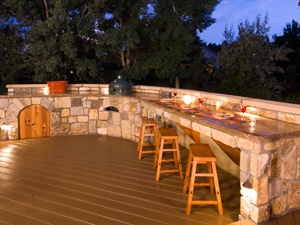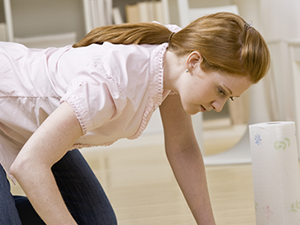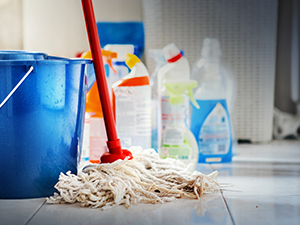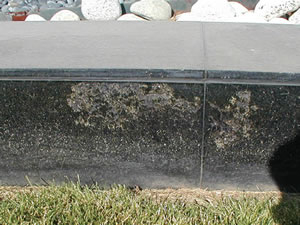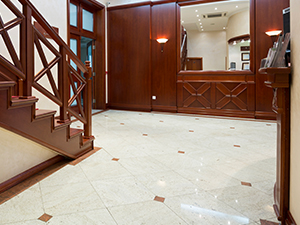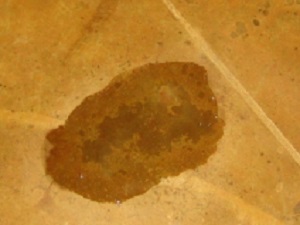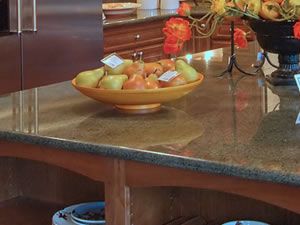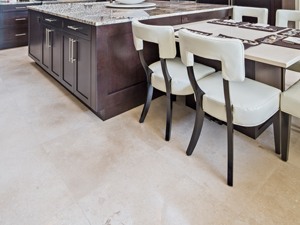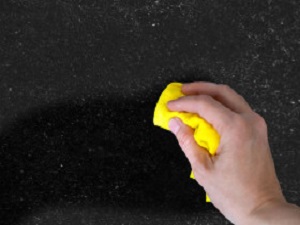People may love hearing and seeing birds, but nobody loves bird droppings, especially on their outdoor kitchen countertops or other exterior natural stone surfaces. Sometimes we get calls from frustrated customers about stains from “bird poop” (or other creative expletives). This article explains how to clean up bird droppings on natural stone, remove the stains that may persist after cleaning, and avoid having to do the same thing again next week.
How to Clean Bird Droppings on Natural Stone
First, remove any solid material. If it is dried on, use a plastic putty knife to gently scrape it away. Do not use metal, as it may leave scratch marks on your stone finish.
Next, wash the area with a stone-safe, pH-neutral cleaner and a clean rag. (You may need to allow the cleaner to dwell for a few minutes to soften and loosen dried-on solid material that would not come off with the plastic putty knife.)
If you see any remaining discoloration on the stone, give the stone time to dry before proceeding to the next step. The discoloration you see may actually be moisture absorbed into porous stone and not an actual stain.
How to Remove Bird Dropping Stains on Natural Stone
To remove stains from bird droppings, make a poultice with an absorbent material, such as diatomaceous earth, flour, or a paper towel, and 40 volume hydrogen peroxide (12%). You will need to purchase this kind of peroxide online or at a beauty supply store, because the peroxide at your local drug store isn’t strong enough.
For more information on creating and applying a poultice, including a how-to video, use our Stain Management App.
IMPORTANT
• Always read the label on the chemical bottle.
• Always follow the directions and precautions listed on the label.
• Never use a chemical if you are unsure what it is or how to protect yourself.
• Always take the time to protect yourself and those working around you.
• Always dispose of a chemical properly. Every municipality has a household hazardous waste drop-off location. For safe disposal of chemical products at work, contact your health and safety representative.
What to Do If the Poultice Doesn’t Work…
Sometimes it takes several poultice applications to remove a stain. If you notice some improvement after the first application, keep trying. It’s very likely that the stain will come out with some persistence and patience.
If you do not see any improvement after your poultice application, remember the stone may just need time to dry.
If the discoloration remains after the stone is dry, then the discoloration may not actually be a stain. Bird droppings contain uric acid and may result in etching on some stones. Etching is chemical damage to the finish. But don’t worry, the finish can be restored by a professional stone restoration contractor.
How to Avoid Bird Droppings on Natural Stone
Some people recommend buying plastic owls with big scary eyes or rubber snakes to keep birds away, but birds eventually catch on and adapt.
If you have bird feeders or bird baths, move them to an area in your yard far away from your natural stone or remove them from your yard altogether.
Movement and sound will discourage birds from getting too close. Try using wind chimes, flags, wind spinners, and the like. If all else fails, cover outdoor kitchen countertops when not in use.
This is one of a series of articles written and published on behalf of Stone and Tile PROS Partners.

